Kingdom Systems of Classification
Chapter 2
Biological Classification
Biological classification is the practice of categorizing living and extinct organisms into groups based on shared traits. Classifying organisms is necessary because it allows us to better understand biodiversity. It aids in the identification of living entities as well as the comprehension of their diversity. Classification aids in our understanding of different types of plants and animals and their characteristics, similarities, and differences. It allows us to see how complex organisms develop from simpler organisms. Different categories are used to understand and research the characteristics, similarities, and differences among various living species. Classification is the tool that allows us to manage a wide range of living organisms. Understanding the inter-relationships between different groups of organisms is critical. Other biological sciences are built on the foundation of classification.
Kingdom Systems of Classification:
Aristotle was the first to attempt to classify things on a more scientific basis. He classified plants into trees, shrubs, and herbs based on simple physical characteristics. He also separated the animals into two groups: those with red blood and those without. A Two Kingdom system of classification was devised during Linnaeus's time, with Plantae and Animalia kingdoms encompassing all plants and animals, respectively. Eukaryotes and prokaryotes, unicellular and multicellular organisms, photosynthetic (green algae), and non-photosynthetic (fungi) species were all lumped together in this system. Plant and animal classifications were simple to implement and understand, but a huge number of creatures did not fit into either group. As a result, the long-used two-kingdom classification was determined to be inadequate. Aside from gross appearance, there was a need to include other characteristics such as cell structure, wall nature, manner of nourishment, habitat, reproduction strategies, evolutionary linkages, and so on. As a result, classification systems for living organisms have experienced several alterations over time. Though the plant and animal kingdoms have remained consistent throughout all systems, the understanding of which groups/organisms should be included inside these kingdoms has evolved; the number and character of additional kingdoms have also been interpreted differently over time by different scientists.
A Five Kingdom Classification was proposed by R.H. Whittaker in 1969. Monera, Protista, Fungi, Plantae, and Animalia were the kingdoms he defined. Cell structure, body arrangement, manner of nourishment, reproduction, and phylogenetic links are among his key classification criteria. A three-domain approach has also been proposed, which divides Kingdom Monera into two domains and leaves the remaining eukaryotic kingdoms in the third domain, resulting in a six-kingdom categorization.
Let's take a look at this five-kingdom classification to see what concerns and considerations affected the system. Plants included bacteria, blue-green algae, fungi, mosses, ferns, gymnosperms, and angiosperms in previous classification systems. The fact that all of the species in this kingdom had a cell wall in their cells served as a unifying characteristic. This grouped people who had a lot of things in common but also had a lot of things in common. It brought together prokaryotic bacteria and blue-green algae (cyanobacteria), as well as other eukaryotic species. It also combined unicellular and multicellular species together, such as Chlamydomonas and Spirogyra being categorized together under algae.The classification did not distinguish between the heterotrophic fungus and the autotrophic green plants, albeit they did have a distinct difference in the composition of their cell walls, with the fungi having chitin and the green plants having a cellulose cell wall. When these qualities were taken into account, the fungi were given their own kingdom: Kingdom Fungi. Kingdom Monera was created to unite all prokaryotic species together, while Kingdom Protista was created to group all unicellular eukaryotic organisms together. Chlamydomonasand Chlorella (both of which have cell walls and were previously put in Algae within Plants) have been combined with Paramoecium and Amoeba in the kingdom Protista (which were earlier placed in the animal kingdom which lack cell walls). It has brought together organisms that were previously classified into various kingdoms.
Kingdom: Monera
Kingdom Monera
Monera is a biological kingdom that is solely made up of prokaryotes. Their DNA is not enclosed within the nucleus as these single-celled organisms lack a true nucleus. The Monerans also do not possess any membrane-bound organelles.
The Kingdom Monera is made up entirely of bacteria. They are the most common microorganisms on the planet. Bacteria can be found practically anywhere. A handful of soil contains hundreds of bacteria. They also exist in harsh environments like hot springs, deserts, snow, and deep oceans, where only a few other species can survive. As parasites, many of them live in or on other organisms.
The spherical Coccus (pl.: cocci), the rod-shaped Bacillus (pl.: bacilli), the comma-shaped Vibrium (pl.: vibrio), and the spiral Spirillum are the four types of bacteria classified by their shape.
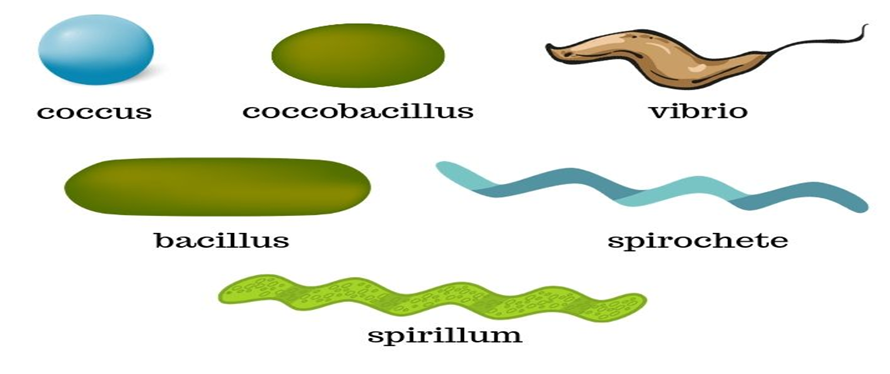
Although bacteria have a simple structure, their activity is extremely sophisticated. Bacteria, in comparison to many other creatures, have the greatest metabolic diversity.Some bacteria are autotrophic, meaning they produce their own nourishment from inorganic sources. They can be either photosynthetic or chemosynthetic autotrophs. The great majority of bacteria are heterotrophs, meaning they feed on dead organic matter or other species. Archaebacteria, Eubacteria, and Cyanobacteria are the three sub-kingdoms of the kingdom Monera.
A. Archaebacteria:
These bacteria are unique in that they survive in extremely salty environments (halophiles), hot springs (thermoacidophiles), and marshy environments (methanogens). Archaebacteria vary from other bacteria in that they have a unique cell wall construction that allows them to survive in harsh environments. Methanogens are bacteria that live in the guts of ruminant animals like cows and buffaloes and are responsible for the creation of methane (biogas) from their feces.
B. Eubacteria:
"True bacteria" is another name for Eubacteria. The existence of a hard cell wall and, if motile, a flagellum distinguishes them. A few bacteria have pili, which are small appendages on the cell surface that aid the bacterium in sexual reproduction. Pili also aids in the attachment of pathogens to their hosts. Depending on the type of the cell wall and the stain they take, they are classified as gram-positive or gram-negative.
C. Cyanobacteria:
Cyanobacteria are photosynthetic autotrophs with chlorophyll similar to green plants. They are unicellular, colonial, or filamentous algae that can be found in freshwater, marine, or terrestrial environments. Gelatinous sheath surrounds the colonies in general. Blooms are common in contaminated water bodies. Some of these species, such as Nostoc and Anabaena, can fix atmospheric nitrogen in specialized cells called heterocysts. Chemosynthetic autotrophic bacteria utilize the energy released by oxidizing inorganic compounds like nitrates, nitrites, and ammonia to produce ATP. They are vital in the recycling of nutrients such as nitrogen, phosphorus, iron, and sulfur.
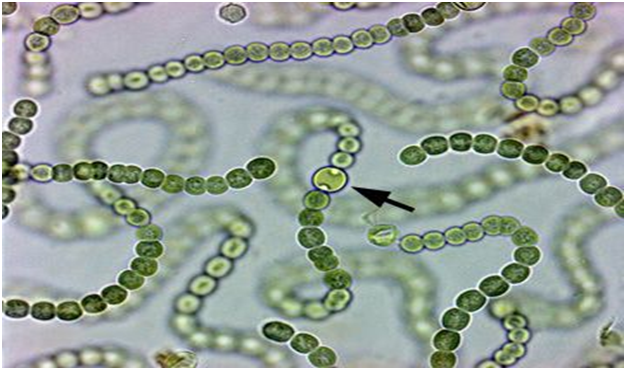
In nature, heterotrophic bacteria are the most common. The majority of them are significant decomposers. Many of them have a major influence on human affairs.They aid in the creation of curd from milk, the manufacture of antibiotics, and the fixation of nitrogen in legume roots, among other things. Some of these are infections that harm humans, crops, farm animals, and pets. Bacterial infections such as cholera, typhoid, tetanus, and citrus canker are well-known. Bacteria mostly reproduce through fission. They may generate spores in unfavorable conditions. They also reproduce by adopting a rudimentary method of DNA transfer from one bacteria to the next, which is similar to sexual reproduction.
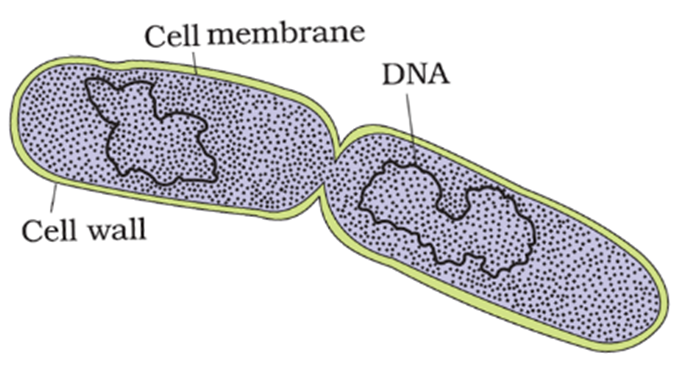
Mycoplasma are creatures that lack a cell wall entirely. They are the world's tiniest living cells, capable of surviving without oxygen. In animals and plants, many mycoplasmas are pathogenic.
Kingdom: Protista
Kingdom Protista
Kingdom Protista is a diverse group of organisms. It includes all eukaryotes that aren't animals, plants, or fungi, including single-celled and multicellular creatures. There are an estimated 60,000 to 200,000 protist species, with many more yet to be discovered. Apart from a relatively simple organization, the eukaryotes that make up this kingdom have little in common. Some protists are small and unicellular, like an amoeba, while others, like seaweed, are enormous and multicellular. Multicellular protists, on the other hand, lack highly specialized tissues and organs. Protists are distinguished from other eukaryotes, such as fungi, mammals, and plants, by their basic cellular arrangement. Protista is largely an aquatic phylum. This kingdom is linked to the kingdoms of plants, animals, and fungus.
The Protista cell body, like other eukaryotes, has a well-defined nucleus and other membrane-bound organelles. Some have flagella or cilia, while others don't. Cell fusion and zygote development are used by protists to reproduce both asexually and sexually. Many protists, such as algae, are photosynthetic and play an important role in ecosystems as primary producers. Other protists cause a variety of deadly human diseases, including malaria and sleeping sickness.Chrysophytes, Dinoflagellates, Euglenoids, Slime molds, andProtozoans come under Protista.
A. Chrysophytes:
Diatoms and golden algae (desmids) are members of this category. They can be found in both freshwater and marine habitats. They are tiny and float on water currents passively (plankton). They are mostly photosynthetic. The cell walls of diatoms produce two thin overlapping shells that fit together like a soapbox. Because the walls are embedded with silica, they are unbreakable. As a result, diatoms have left behind a vast amount of cell wall deposits in their habitat, which has been referred to as 'diatomaceous earth' over billions of years. Because this soil is rough, it is utilized for polishing and filtration of oils and syrups. In the oceans, diatoms are the primary 'producers.'
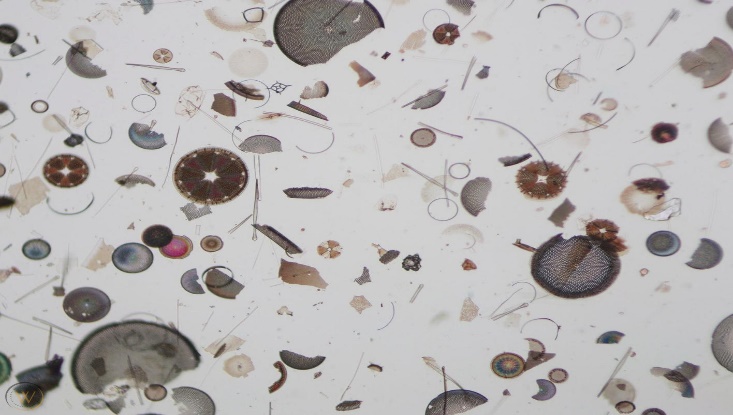
B. Dinoflagellates:
These organisms are mostly marine and photosynthetic.They appear yellow, green, brown, blue, or red dependingon the main pigments present in their cells. The cell wallhas stiff cellulose plates on the outer surface. Most ofthem have two flagella; one lies longitudinally and theother transversely in a furrow between the wall plates.Very often, red dinoflagellates (Example: Gonyaulax)undergo such rapid multiplication that they make thesea appear red (red tides). Toxins released in such largenumbers may even kill other marine animals such as fish.

C. Euglenoids:
The majority of them are freshwater organisms found in stagnant water. Instead of a cell wall, they have a protein-rich layer called pellicle which makes their body flexible.They have two flagella, a short and a long one. Thoughthey are photosynthetic in the presence of sunlight, whendeprived of sunlight they behave like heterotrophs bypredating on other smaller organisms. Interestingly, thepigments of Euglenoids are identical to those present in higher plants. Example: Euglena.
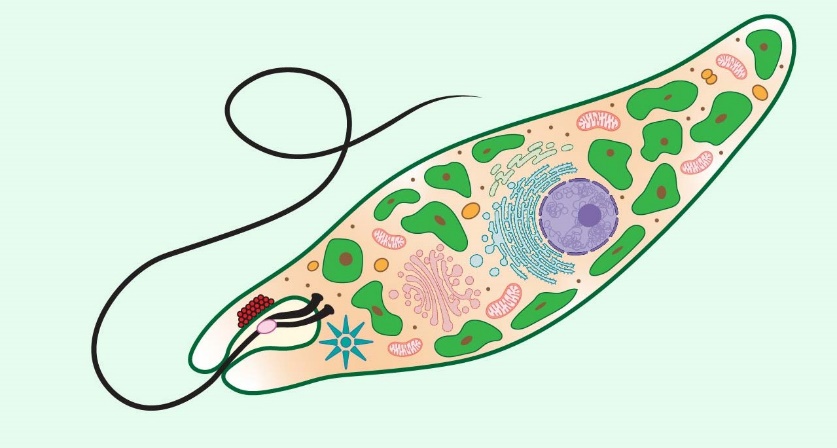
D. Slime Molds:
Slime molds are protists that feed on their surroundings. The organism eats organic matter as it glides along with rotting twigs and leaves. They create a plasmodium, which can grow and spread over severalfeet if the conditions are right. The plasmodium develops and generates fruiting bodies with spores at their tips in unfavorable conditions. True walls exist within the spores. They are highly hardy and may live for many years in harsh environments. Air currents disseminate the spores.
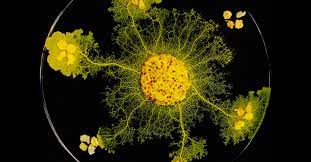
E.Protozoans:
They are all heterotrophic organisms that exist as predators or parasites. Animal relatives are thought to be their ancestors. Protozoans are divided into four categories.
1. Amoeboid protozoans dwell in freshwater, seawater, or moist soil. As in Amoeba, they move and seize their prey by putting out pseudopodia (false feet). Silica shells cover the surface of marine organisms. Some of them are parasites, such as Entamoeba.
2. Flagellated protozoans: This group includes both free-living and parasitic protozoans. They have flagella on their bodies. Sleeping sickness is caused by a flagellated parasitic protozoan. Trypanosoma is a good example.
3. Ciliated protozoans: Ciliated protozoans are aquatic, actively moving organisms with thousands of cilia. They have a cavity (gullet) on the cell surface that opens to the outside. The water-containing food is directed towards the gullet by the coordinated movement of rows of cilia. Paramoecium is a good example.
4. Sporozoans: This term refers to a group of organisms that have a spore-like stage in their life cycle. Plasmodium (malarial parasite), which causes malaria, is the most well-known. Malaria is a disease that has a devastating impact on the human population
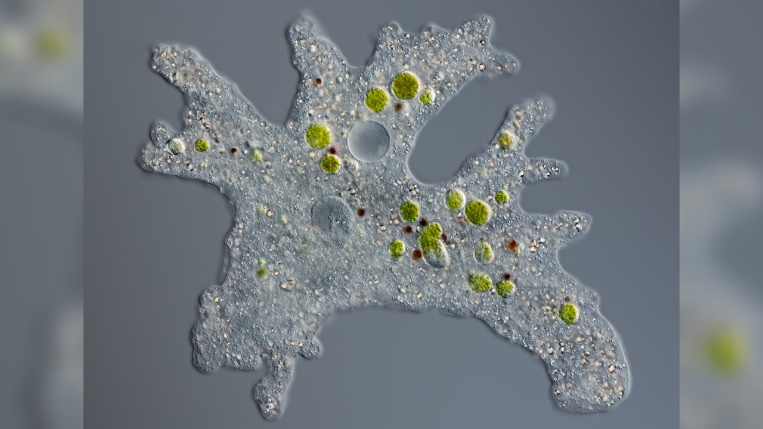
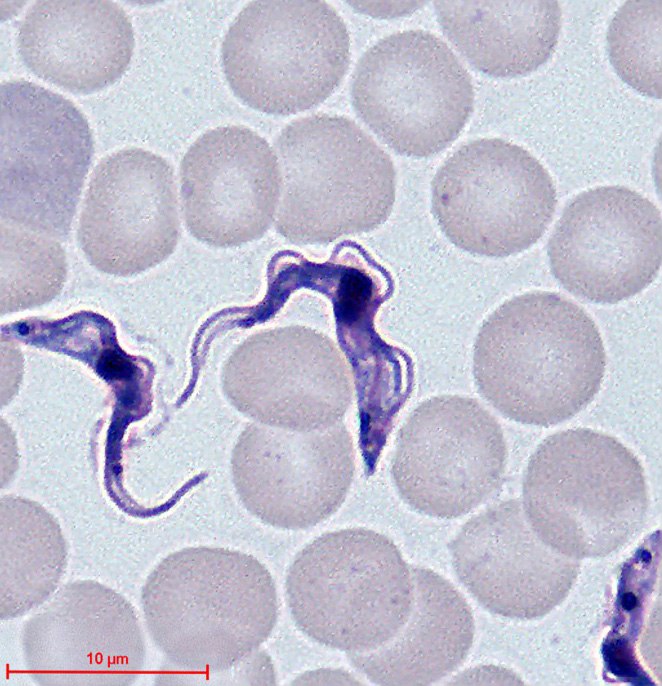
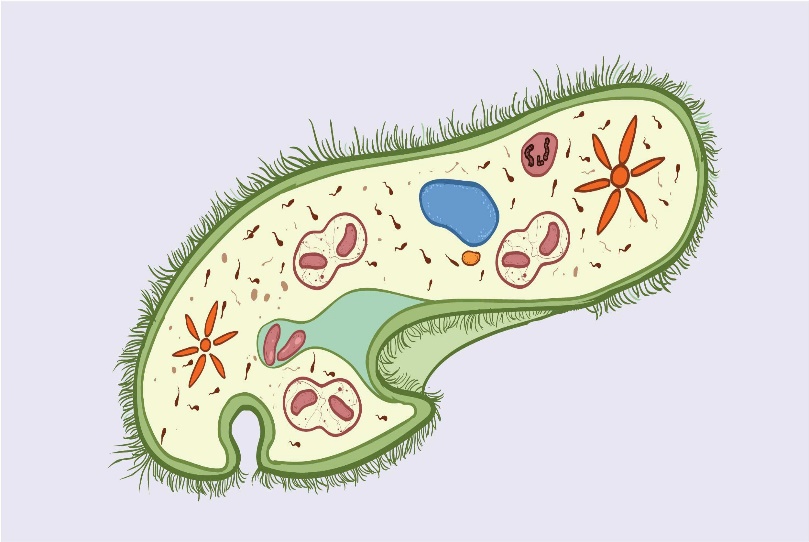
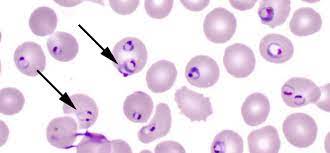
Figure 8 (a) Ameoba (b) Trypanosoma (c) Paramecium (d) Plasmodium
Kingdom: Fungi
Kingdom Fungi
Fungi are eukaryotic organisms that include yeasts, molds, mushrooms as well as other microbes.Fungi are a distinct kingdom of heterotrophic creatures. They have a wide range of forms and environments. Fungi can often be observed on stale bread and rotten fruits. Toadstools and the common mushroom that we eat are both fungi. A parasitic fungus causes white patches on mustard leaves. Some unicellular fungi, such as yeast, are utilized in the production of bread and beer. Other fungi produce illnesses in plants and animals; Puccinia, which causes wheat rust, is a good example. Penicillium, for example, is a source of antibiotics. Fungi are widely distributed and can be found in the air, water, soil, and on animals and plants. They thrive in warm, humid environments.Mycology is the branch of biology concerned with the study of fungi.
Fungi are filamentous, with the exception of yeasts, which are unicellular. Their bodies are made up of hyphae, which are long, slender thread-like structures. Mycelium refers to the network of hyphae. Coenocytic hyphae are hyphae that are continuous tubes filled with multinucleated cytoplasm. In the hyphae of others, there are septae or cross walls. Fungi's cell walls are made up of chitin and carbohydrates.
Saprophytes are fungi that are heterotrophic and absorb soluble organic materials from dead substrates. Parasites are organisms that rely on live plants and animals for their survival. They can also live as symbionts, forming lichens with algae and mycorrhiza with the roots of higher plants.
Fungi reproduce via vegetative processes such as fragmentation, fission, and budding. Spores known as conidia, sporangiospores, and zoospores are instrumental in asexual reproduction, while oospores, ascospores, and basidiospores are responsible for sexual reproduction. Fruiting bodies are structures that produce different types of spores.
The three phases of the sexual cycle are as follows:
(i) Plasmogamy, which is the fusion of protoplasms between two motile or non-motile gametes.
(ii) Karyogamy, which is the fusion of two nuclei.
(iii) In a zygote, meiosis results in haploid spores.
Two haploid hyphae of compatible mating types come together and merge when a fungus reproduces sexually. In some fungi, the fusing of two haploid cells results in the formation of diploid cells right away (2n).
Kingdom fungi can be divided into three groups based on their nutritional needs.
(i)Saprophytic fungus get their sustenance from dead organic matter. Rhizopus, Penicillium, and Aspergillus are other examples.
(ii)Parasitic fungus get their food by living on other living organisms (plants or animals) and absorbing nutrients from them. Taphrina and Puccinia are two examples.
(iii)Symbiotic fungi are those that exist in an interdependent relationship with other species in which both parties benefit. Lichens and mycorrhizae are two examples. Lichens are the result of a symbiotic relationship between algae and fungi. Algae and fungi benefit from each other in this situation because fungi give protection to algae and algae provide carbohydrates for fungi.
The morphology of the mycelium, mode of sporeformation, and fruiting bodies form the basis for thedivision of the kingdom into various classes which are discussed below.
(a) Phycomycetes:
Phycomycetes can be found in aquatic areas and on decaying wood in moist and humid environments, as well as obligatory parasites on plants. Algal fungi are sometimes known as Phycomycetes. They have aseptate coenocytic hyphae that are distinctive. Asexual reproduction occurs via zoospores (motile) or aplanospores (asexual) (non-motile). In the sporangium, these spores are produced endogenously. A zygospore is created when two gametes fuse together. The morphology of these gametes is either similar (isogamous) or distinct (heterogamous) (anisogamous or oogamous). Mucor, Rhizopus (the bread mold), and Albugo(the parasitic fungi on mustard) are other typical examples.
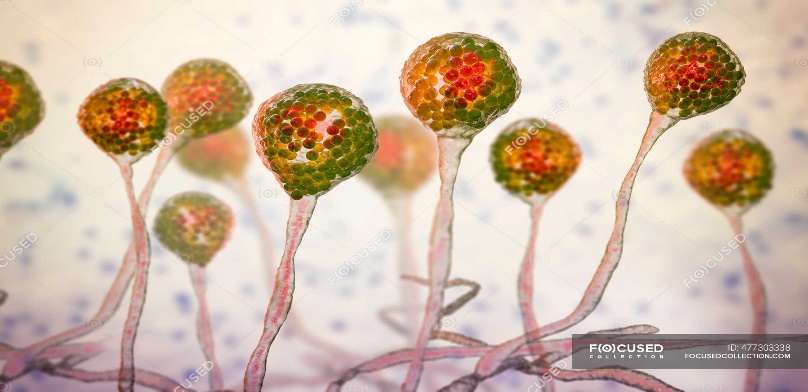
(b) Ascomycetes:
The ascomycetes, sometimes known as sac-fungi, are typically multicellular (e.g., Penicillium) or occasionally unicellular (e.g. Saccharomyces or yeast). These fungi may be Saprophytic, decomposers, parasitic, or coprophilous(growing on dung). Mycelium is septate and branched. Conidia grown exogenously on special mycelium termed conidiophores are the asexual spores. Conidia create mycelium when they germinate. Ascospores are sexual spores that are produced endogenously in sacs similar to asci (singular ascus). These asci are grouped in ascocarps, which are distinct types of fruiting structures. Aspergillus, Claviceps, and Neurospora are some examples. Neurospora is widely utilized in biochemical and genetic research. Many of the members, such as morels and truffles, are edible and regarded as delicacies.
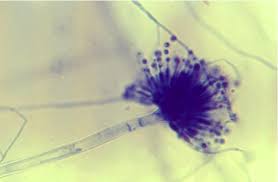
(c) Basidiomycetes:
Mushrooms, bracket fungi, and puffballs are examples of basidiomycetes. They can be found growing in soil, on logs and tree stumps, and in living things. Rusts and smuts, for example, are parasitic plant bodies. The mycelium is septate and branching. Although asexual spores are rare, vegetative reproduction by fragmentation is prevalent. Although there are no sex organs, plasmogamy is caused by the fusing of two vegetative or somatic cells of different strains or genotypes. The dikaryotic complex that results eventually gives rise to basidium. The basidium undergoes karyogamy and meiosis, resulting in four basidiospores. The basidiospores are formed exogenously on the basidium (pl.: basidia). Basidia are arranged in basidiocarps, which are fruiting bodies. Agaricus (mushroom), Ustilago (smut), and Puccinia are some of the most prevalent members.
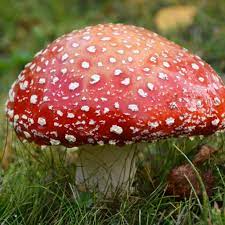
(d) Deuteromycetes:
In this category, only asexual or vegetative phases of these fungi are known, therefore they are commonly referred to as imperfect fungi. When the sexual forms of these fungi were discovered, they were placed in the appropriate groups. It's also likely that the asexual and vegetative stages were given one name (and were classified as Deuteromycetes), while the sexual stage was given another one (and placed under another class). The fungi were accurately recognized and moved out of Deuteromycetes after the links were discovered. Deuteromycetes were frequently shifted to ascomycetes and basidiomycetes after their perfect (sexual) stages were discovered. Conidia are asexual spores that Deuteromycetes use to reproduce. The mycelium is branching and septate.Some individuals are saprophytes or parasites, whereas the majority are litter decomposers who aid in mineral cycling. Alternaria, Colletotrichum, and Trichoderma are other examples.
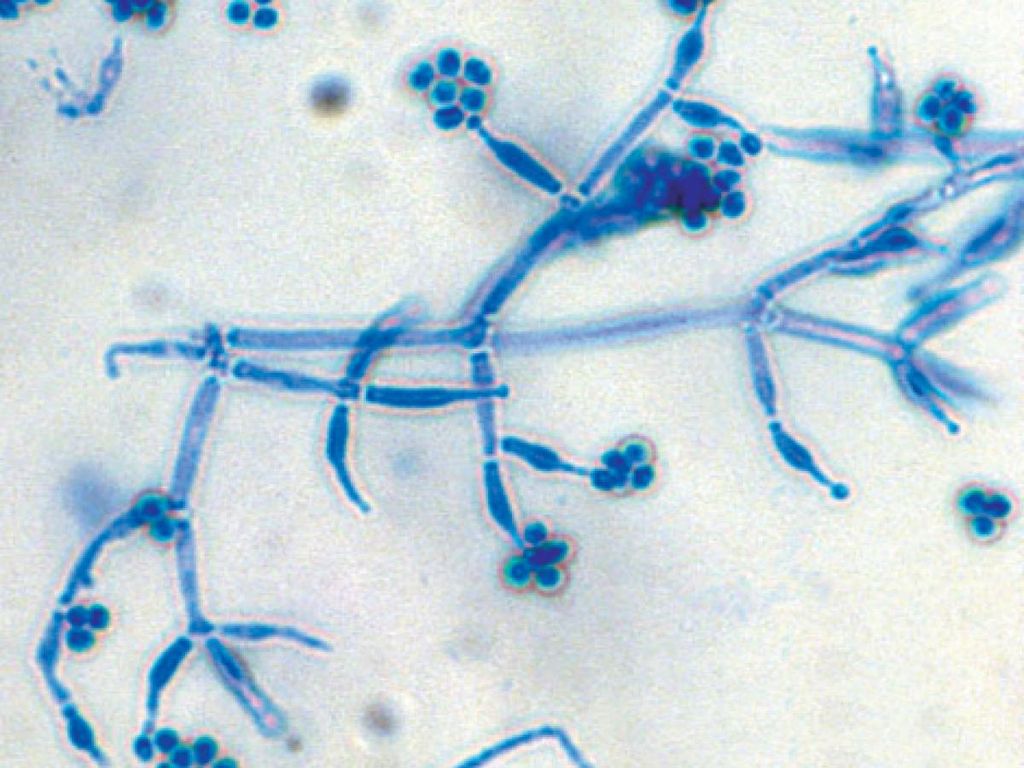
Kingdom: Plantae
Kingdom Plantae
Kingdom Plantae refers to any eukaryotic chlorophyll-containing organism that is typically referred to as a plant. Plant cells are eukaryotic in nature, with significant chloroplasts and a cellulose-based cell wall. Algae, bryophytes, Pteridophytes, gymnosperms, and angiosperms are all members of the Plantae family. A few members, such as insectivorous plants and parasites, are partially heterotrophic.
Insectivorous plants include bladderwort and Venus flytrap, while Cuscutaexists like a parasite.
Plants have two unique phases in their life cycle: diploid sporophytic and haploid gametophytic, which alternate. The lengths of the haploid and diploid phases, as well as whether they are free-living or dependent on others, varied between plant families. Alternation of generation is the term for this phenomenon.
Plants are classified according to the following criteria:
1. Plant body: Whether or not a well-differentiated plant body exists. Root, stem, and leaves, for example.
2. Vascular system: The presence or absence of a vascular system for water and other material movements. Phloem and Xylem, are two types of vascular tissues in plants.
3. The presence or absence of flowers and seeds, as well as whether the seeds are bare or wrapped in fruit, are all factors in seed production.
According to the above-mentioned criteria, the plant kingdom has been divided into five subgroups:
(A) Thallophyta:
Thallophytes have a thallus-like body structure and lack a well-differentiated body structure. Plants having a primitive and simple body structure are included. The thallus is the plant's main body, and it can be filamentous, colonial, branching, or unbranched. Algae such as green algae, red algae, and brown algae are examples. Volvox, Fucus, Spirogyra, Chara, Polysiphonia, Ulothrix, and other species are common examples.
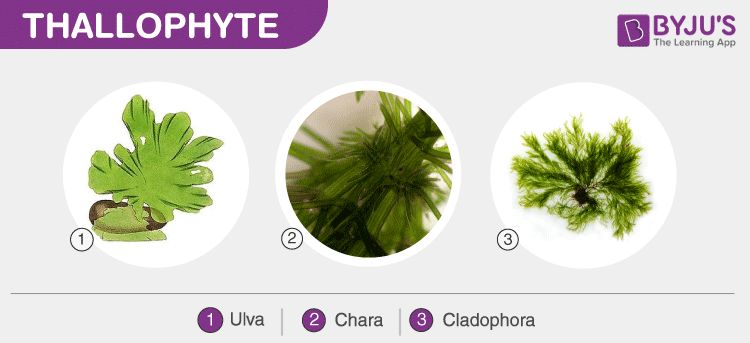
(B) Bryophytes
Bryophytes are plants that lack vascular tissues. Root-like, stem-like, and leaf-like components make up the plant's body. Bryophytes are terrestrial plants that are also known as "plant amphibians" since they require water for sexual reproduction. They thrive in wet, shaded environments. Mosses, hornworts, and liverworts are all members of the Bryophyta family. Marchantia, Funaria, Sphagnum, Antheoceros, etc. are well-known examples.
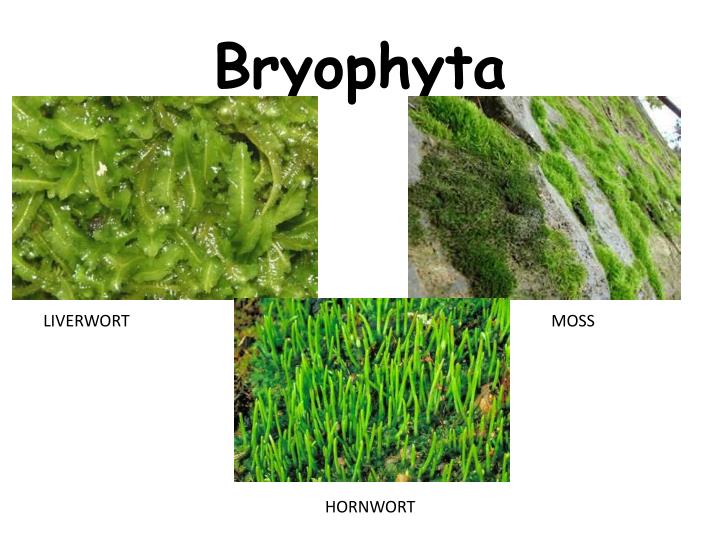
(C) Pteridophyta:
Pteridophytes have a plant body that is well-differentiated into roots, stems, and leaves. They have a circulatory system that allows water and other chemicals to be transported. Selaginella, Equisetum, Pteris, and other common examples are only a few.
Non-flowering and non-seed bearing plants. E.g. Thallophyta, Bryophyta, Pteridophyta are collectively known as Cryptogams.
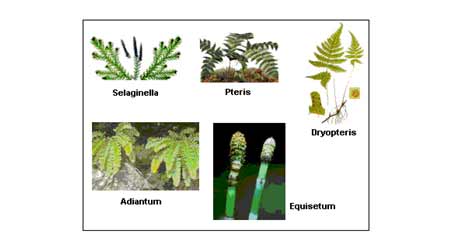
(D) Gymnosperms:
Gymnosperms have a plant body and vascular tissues that are well-differentiated. They produce naked seeds, which are seeds that are not encased in a fruit. Gymnosperms include plants such as Cycas, Pinus, Ephedra, and others.
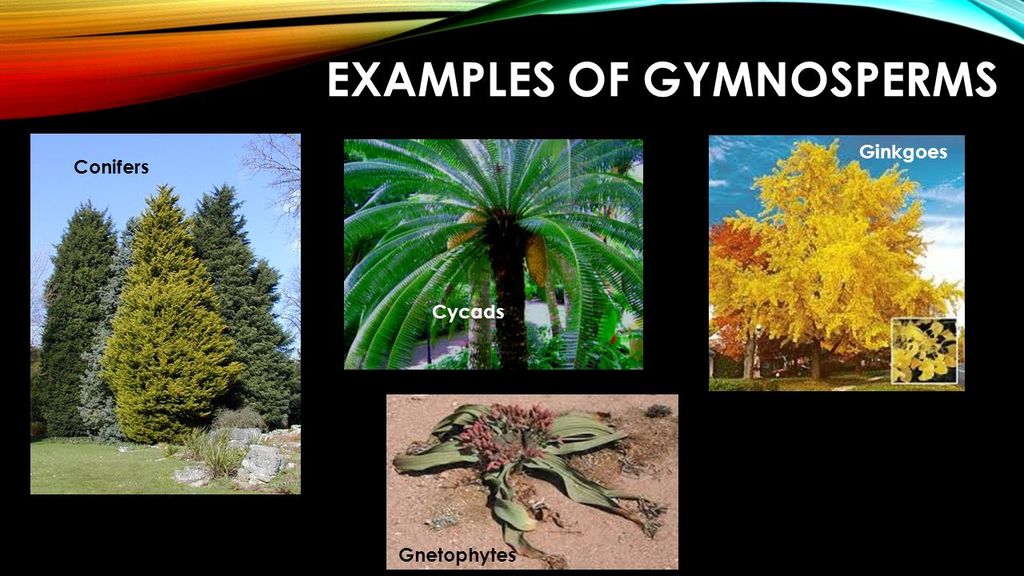
(E) Angiosperms:
Seed-bearing vascular plants with a well-differentiated plant body are known as angiosperms. Angiosperm seeds are contained within the fruits. Angiosperms are found all over the world and range in size from 0.1 cm to 100 m. For example, Wolffia is a little plant that grows to be around 0.1 cm tall, while Eucalyptus trees grow to be over 100 m tall. According to the number of cotyledons contained in the seeds, angiosperms are further split into monocotyledons and dicotyledons. Mango, rose, tomato, onion, wheat, maize, and other common examples are only a few.
Flowering and seed-bearing plants. E.g. Gymnosperms, Angiosperms are known as Phanerogams.
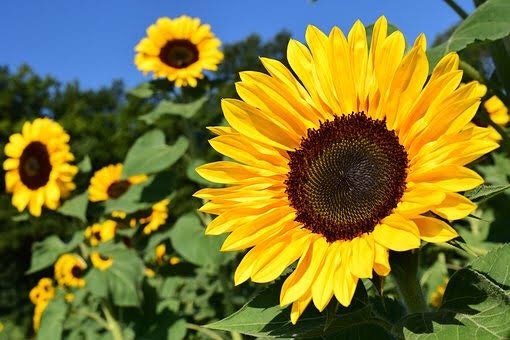
Kingdom: Animalia
Kingdom Animalia
Multicellular eukaryotic organisms characterize this kingdom. Animals rely on plants for food, either directly or indirectly. Food is digested in an interior cavity, and food reserves are stored as glycogen or fat. Their feeding mode is heterotrophic and holozoic. They have a distinct growth pattern and mature into adults with distinct shapes and sizes. Higher forms have more complex sensory and motor mechanisms. The majority of them can move around. Male and female copulation is followed by embryological development in sexual reproduction. The animal kingdom is the most populous of the five kingdoms. They do not, however, have chlorophyll or a cell wall, as do plants.
Kingdom Animalia is divided into ten subphyla depending on body design or differentiation. These phyla are as follows:
(A) Phylum Porifera:
It is a phylum of organisms that have holes or perforations. Commonly known as Sponges. Poriferans are multicellular organisms with a hard outer skeleton that is non-motile. Their bodies have pores that form a canal system that aids in the passage of chemicals. They lack a well-developed organ or organ system and are not distinguished between head and tail. They primarily live in a marine environment. Spongilla and Sycon are examples of the Porifera phylum.
(B) Phylum Coelenterata (Cnidaria):
Hollow-bellied organisms are included in coelenterates. The presence of a hollow bodily cavity is one of the distinguishing characteristics of this group. The body is made up of two layers of cells: interior and exterior linings, which are differentiated into two ends. All aquatic animals are included in this phyla. Members of this phylum dwell in both colonies (corals) and solitary environments (Sea anemones). Hydra and jellyfish are examples of the phylum Coelenterata.
(C) Phylum Platyhelminthes:
Flatworms are the popular name for Platyhelminthes. Their body shape is complicated, dorsoventrally flattened, and distinct. Tissues are triploblastic and differentiated from three layers of cells. There is no actual interior cavity or coelom in them. They are symmetrical on both sides and can be free-living (Planaria) or parasitic (liver flukes). Tapeworm and Planaria are examples of Platyhelminthes phylum.
(D) Phylum Nematoda:
Nematodes, sometimes known as roundworms, belong to the Phylum Nematoda. The body of a nematode is cylindrical. They are triploblastic and bilaterally symmetrical. They have a fake bodily cavity called pseudocoelom. Elephantiasis and ascariasis are parasitic diseases caused by them. Ascaris and Wuchereria are examples of the phylum Nematoda.
(E) Phylum Annelida:
Annelids, are often known as segmented or ringed worms. They possess a head and tail that are separated by a segmented cylindrical body. The body is symmetrical on both sides and is triploblastic. They have a true cavity in their bodies. Their habitat includes both marine and freshwater environments, as well as land. Earthworms and Leeches are examples of the phylum Annelida.
(F) Phylum Arthropoda:
The term "arthropod" refers to a creature with jointed legs. This phylum includes animals with jointed appendages. This is the animal kingdom's largest phylum. They have jointed legs, an exoskeleton, and a segmented body that is bilaterally symmetrical. Organs and organ systems are well-differentiated. They have an open circulatory system, but no distinct blood vessels. Spiders, butterflies, and mosquitoes are all members of the Arthropoda phylum.
(G) Phylum Mollusca:
Molluscs are a wide group of animals that belong to the Phylum Mollusca. They are triploblastic and bilaterally symmetrical. The body is less segmented, yet organs and organ systems are well-developed. Mollusks typically have an open circulatory system. There are limbs present. Snails and octopuses are examples of the Mollusca phylum.
(H) Phylum Echinodermata:
Echinoderms are animals with spiky skin. They are triploblastic and have radial symmetry. They are true coelomates. The skeletal structure is made up of calcium carbonate and is quite hard. They are aquatic animals that live in the open ocean. Sea urchins and starfish are examples of the phylum Echinodermata.
(I) Phylum Hemichordata:
Hemichordata is a phylum of marine deuterostome organisms that is sometimes referred to as the echinoderms' sister group. The body is soft and delicate, with a proboscis. The epidermis is made up of only one layer. It is made up of worm-like marine invertebrates that are organized into organ systems. They have a circulatory system that is open. Because they are marine, they breathe through their gills. External fertilization is observed, and they have different sexes. Development is a direct process. Hemichordata includes Balanoglossus and Saccoglossus.
(J) Phylum Chordata:
Animals having a flexible cord supporting their dorsal or rear sides belong to the Chordata phylum. The majority of the species in the phylum Chordata are vertebrates or creatures with backbones. They are bilaterally symmetrical, triploblastic, and classified at the organ-system level. They have a nerve cord and a notochord. The circulatory system is one that is closed. Urochordata, Cephalochordata, and Vertebrata are the three subphyla of Chordata. Chordates include pandas, crows, sharks, salamanders, alligators, sea squirts, and many others.
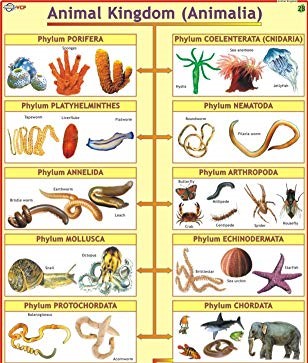
Viruses, viroids, prions and lichens:
Lichens and some acellular species like viruses, viroids, and prions are not included in Whittaker's five kingdom classification system. Here's a quick run-down of what they're all about.
Viruses were not classified since they are not actually 'alive,' as defined by organisms with a cell structure. Viruses are non-cellular organisms with a crystalline structure that is inactive outside of living cells. When they infect a cell, they use the host cell's machinery to duplicate themselves, eventually destroying the host. Viruses are classified as either living or non-living organisms. Dmitri Ivanowsky (1892), who identified specific bacteria as the causal organisms of the mosaic sickness, gave the name virus, which means venom or deadly fluid.Because they passed through bacterium-proof filters, they were discovered to be smaller than bacteria. M.W. Beijerinek (1898) discovered that an extract from sick tobacco plants could infect healthy plants, and he named the fluid Contagium vivum fluidum (infectious living fluid). W.M. Stanley (1935) demonstrated that viruses can crystallize, and that crystals are mostly made up of proteins. Outside of their respective host cell, they are inactive. Viruses are obligate parasites.Viruses include genetic material in the form of RNA or DNA, in addition to proteins. There isn't a single virus that has both RNA and DNA. A virus is a nucleoprotein with infectious genetic material. Plant viruses contain single-stranded RNA, while animal viruses have either single or double-stranded RNA or double-stranded DNA.
Bacterial viruses, also known as bacteriophages (viruses that infect bacteria), are double-stranded DNA viruses that infect bacteria. The nucleic acid is protected by a protein coat called capsid, which is made up of tiny subunits called capsomeres. The geometric forms of these capsomeres are helical or polyhedral. Mumps, smallpox, herpes, and influenza are all diseases caused by viruses. AIDS is also caused by a virus known as HIV in humans.Mosaic formation, leaf rolling and curling, yellowing and vein clearing, dwarfing, and stunted development are some of the symptoms seen in plants.
Viroids: In 1971, T.O. Diener found a novel infectious agent that caused potato spindle tuber disease and was smaller than viruses. It was discovered to be a free RNA that lacked the protein covering that viruses have, therefore the term viroid. The viroid's RNA has a low molecular weight.
Prions: In modern medicine, an agent made up of improperly folded protein has been discovered to spread some infectious brain illnesses. The agent was about the same size as viruses. Prions were the name given to these agents. The most well-known prions disorders are bovine spongiform encephalopathy (BSE), also known as mad cow disease in cattle, and its human counterpart Cr–Jacob disease (CJD).
Lichens are symbiotic (meaning mutually beneficial) interactions between algae and fungi. Phycobiont refers to the algal component, while mycobiont refers to the fungus component. Both are autotrophic and heterotrophic, respectively. Fungi offer refuge and absorb mineral nutrients and water for algae, and algae supply sustenance for fungi. Their relationship is so strong that if you saw a lichen in the wild, you'd never guess it included two different organisms. Lichens are excellent pollutant indicators since they do not develop in polluted environments.
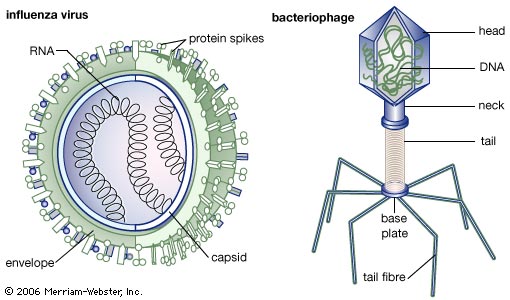

 ACME SMART PUBLICATION
ACME SMART PUBLICATION
